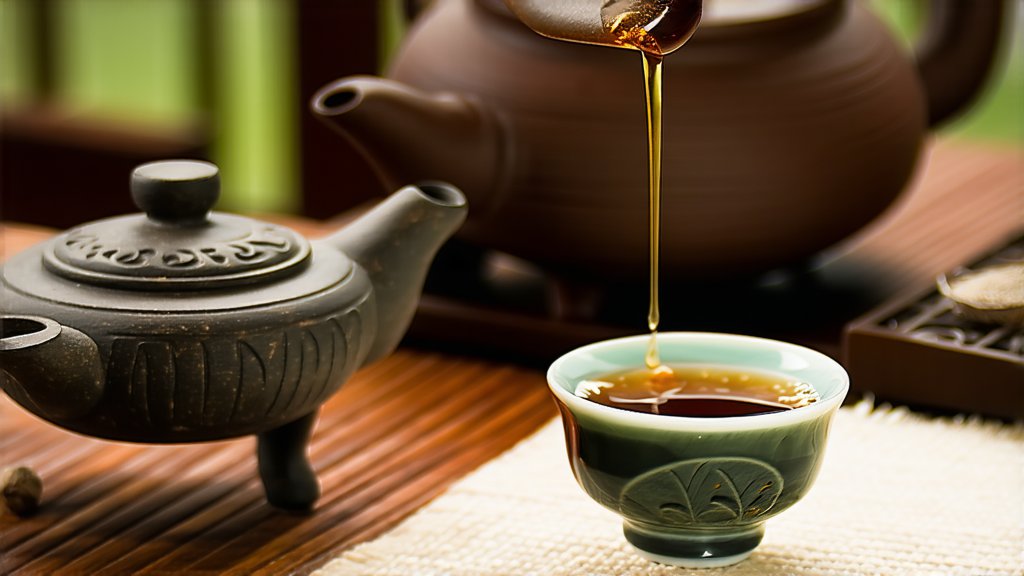
Pu-erh tea, a distinguished member of the dark tea family from China, holds a unique place in the world of tea due to its rich history, complex production process, and unparalleled aging potential. Originating from the Yunnan province, this tea has been cherished for centuries, not only for its distinctive taste but also for its reputed health benefits. In this article, we delve into the fascinating world of Pu-erh tea, exploring its historical roots, varieties, meticulous production techniques, and the art of its appreciation.
Historical Background
The story of Pu-erh tea dates back over a thousand years to the ancient caravan routes that connected Yunnan with Tibet and other regions of Asia. These routes, known as the Tea Horse Roads, facilitated the trade of tea, horses, and other goods, making Pu-erh an integral part of cultural and economic exchanges. The name "Pu-erh" itself is derived from the city of Pu'er in Yunnan, which became a significant hub for tea trading during the Tang Dynasty (618-907 AD). Over time, Pu-erh tea evolved into a symbol of sophistication and refinement, enjoyed by emperors and common folk alike.
Types of Pu-erh Tea
Pu-erh tea can be broadly categorized into two main types: raw (Sheng) and ripe (Shou). Each type undergoes a different fermentation process, resulting in distinct flavors and characteristics.
-
Raw Pu-erh (Sheng): This type undergoes natural fermentation over time. Freshly picked leaves are sun-dried and then compressed into cakes, bricks, or other shapes without further processing. As the tea ages, it develops a complex profile with notes ranging from floral and fruity to earthy and woody. Sheng Pu-erh is prized for its ability to transform and mature, often improving in quality with proper storage.
-
Ripe Pu-erh (Shou): Unlike Sheng, Shou Pu-erh undergoes a controlled fermentation process called 'wet piling' or 'wo dui,' where piles of tea leaves are kept moist and warm to accelerate microbial activity. This process mimics the natural aging process and typically takes several months to complete. The result is a mellow, earthy tea with a smooth texture and deep, rich flavors reminiscent of caramel, chocolate, and sometimes even hints of dried fruits.
Production Process
The journey of Pu-erh tea from leaf to cup involves several intricate steps:
-
Harvesting: Only the top one or two leaves and the bud of the tea plant are selected for high-quality Pu-erh. Harvesting usually occurs multiple times a year, depending on the region and climate.
-
Withering: Freshly picked leaves are spread out to wilt under the sun or in shade, reducing moisture content and softening the leaves for rolling.
-
Rolling & Shaping: The withered leaves are rolled into tight spirals or twisted shapes, which helps release more juices during the subsequent stages.
-
Sun Drying: For raw Pu-erh, the rolled leaves are sun-dried, preserving their natural enzymes for future fermentation.
-
Fermentation (for Shou): The wet piling process is carried out in large piles, where microorganisms break down the tea components, leading to its characteristic dark color and rich taste.
-
Compressing: Both Sheng and Shou Pu-erh can be compressed into various forms such as cakes, bricks, or tuocha (nestled shapes), using steam heat to soften the leaves before pressing.
-
Aging: While Sheng Pu-erh continues to age naturally after compression, Shou Pu-erh is considered ready for consumption once the fermentation process is complete. However, both types can further improve with proper storage conditions.
Appreciating Pu-erh Tea
To truly appreciate Pu-erh tea, one must understand the nuances of its preparation and tasting rituals:
-
Preparation: Use a Yixing clay teapot or a Gaiwan (a lidded bowl) made of porcelain or glass for brewing. Boil water to around 95-100°C (203-212°F) for raw Pu-erh and slightly cooler for ripe Pu-erh. Rinse the tea leaves briefly with hot water to awaken their flavors.
-
Steeping Time & Temperature: The first infusion is typically shorter, around 5-10 seconds, to cleanse the leaves. Subsequent steeps can range from 10 seconds to several minutes, adjusting according to personal preference and the tea's age and strength. Younger teas generally require shorter steeping times compared to older ones.
-
Tasting Notes: Pay attention to the aroma, color, taste, and mouthfeel. Sheng Pu-erh may exhibit bright, astringent notes with a long-lasting finish, while Shou offers a velvety texture with sweet, earthy undertones. Look for complexity and balance in each sip.
-
Multiple Infusions: Pu-erh tea is known for its endurance, allowing multiple infusions from the same leaves. With each brew, new layers of flavor emerge, showcasing the depth and versatility of this remarkable tea.
In conclusion, Pu-erh tea stands as a testament to China's rich tea heritage and the artistry involved in its creation. From its storied past along the ancient Tea Horse Roads to its modern-day popularity among tea connoisseurs worldwide, Pu-erh encapsulates the essence of transformation and timeless elegance. Whether you're drawn to the vibrant vitality of raw Sheng or the mellow comfort of ripe Shou, exploring the world of Pu-erh tea promises a journey filled with discovery and delight.